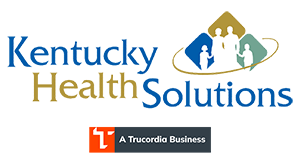2365 Harrodsburg Rd, Suite B325, Lexington, KY 40504 +1-859-309-5033 Email Us
Medicare Prescription Payment Plan Questions and Answers | Kentucky Health Solutions
- You are currently here!
- Home All Blog PostsOur BlogMedicare Prescription Payment Plan Questions and Answers







Medicare Prescription Payment Plan Questions and Answers
In August of 2022, the Inflation Reduction Act of 2022 was signed into law. The prescription drug law makes improvements to Medicare by expanding benefits, lowering drug costs, and improving the sustainability of the Medicare program for generations to come. It provides meaningful financial relief for millions of people by improving access to affordable treatments and strengthening Medicare, both now and in the long run.
Beginning in 2025, the prescription drug law requires all Medicare prescription drug plans (Medicare Part D plans) — including both standalone Medicare prescription drug plans and Medicare Advantage plans with prescription drug coverage — to offer Part D enrollees the option to pay out-of-pocket prescription drug costs in the form of capped monthly payments instead of all at once at the pharmacy. This will be helpful for people with Medicare Part D who have high cost sharing earlier in the plan year by spreading out those expenses over the course of the year. While this program is available to anyone with Part D, CMS will be developing tools that will help Part D enrollees and their caregivers decide whether the program is right for them, as not all enrollees may benefit from the program. CMS named this program the Medicare Prescription Payment Plan.
Q: What is the Medicare Prescription Payment Plan?
The Medicare Prescription Payment Plan is a new program created under the Inflation Reduction Act that requires Part D plan sponsors to provide their enrollees with the option to pay out-of-pocket prescription drug costs in the form of monthly payments over the course of the plan year instead of all at once to the pharmacy. The program begins January 1, 2025. Program participants will pay $0 to the pharmacy for covered Part D drugs, and Part D plan sponsors will then bill program participants monthly for any cost sharing they incur while in the program. Pharmacies will be paid in full by the Part D sponsor in accordance with Part D prompt payment requirements.
Q: Who is likely to benefit from the Medicare Prescription Payment Plan?
Being able to pay high cost sharing amounts in the form of monthly payments instead of all at once to the pharmacy will improve access to — and affordability of — prescription drugs for some people with Medicare Part D. This option can help program participants who face high cost sharing for prescription drugs manage these costs by spreading them out over the course of the plan year. While this program is available to anyone with Medicare Part D, enrollees with high cost sharing earlier in the plan year are more likely to benefit from the program. For Medicare enrollees with Part D who are eligible for the Low-Income Subsidy (LIS) (also known as Extra Help), enrollment in Extra Help is more advantageous than the Medicare Prescription Payment Plan. The final part one guidance includes detailed examples of the monthly payment calculation, including for mid-year plan switches.
Q: When can Part D enrollees opt into the Medicare Prescription Payment Plan? How will Part D enrollees opt into the program?
Starting with plan year 2025, any Part D enrollee may opt into the program prior to the beginning of a plan year or in any month during a plan year. Part D enrollees or their legal representative will be able to opt in directly with their Part D plan sponsor via several different mechanisms. When Part D sponsors receive a request to opt into the program before the plan year begins, they must process the request within 10 calendar days of receipt. When a request is received during the plan year, they must process it within 24 hours of receipt.
Q: Can individuals opt out of the Medicare Prescription Payment Plan once they have opted in? Can an individual’s participation be terminated?
Yes, Part D plan sponsors must have a process in place to allow their program participants to opt out at any point during the plan year. Part D plan sponsors will continue to send monthly bills after someone opts out, and, though they cannot require it, they can also give the Part D enrollee the option to repay their outstanding balance as a lump sum. After opting out, the individual will pay any new out-of-pocket costs directly to the pharmacy.
Sourced: Integrity Marketing
Recent Articles